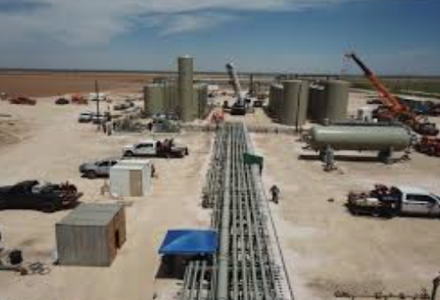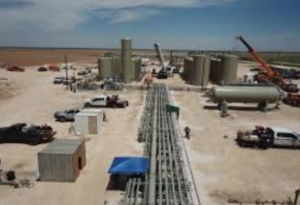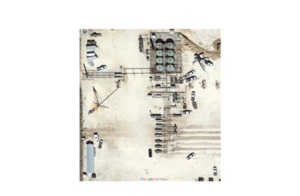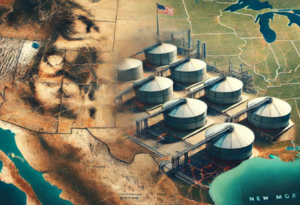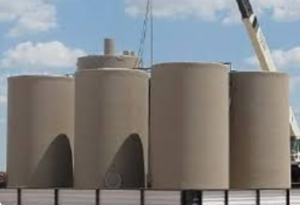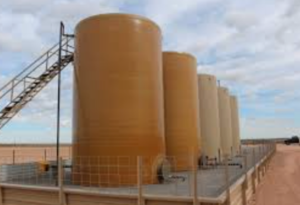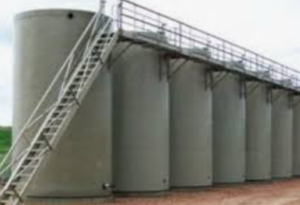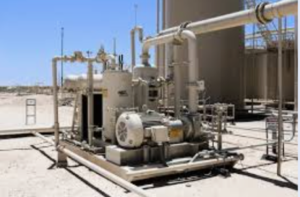The Permian Basin is one of the largest oil and gas producing regions in the world, and with such large-scale operations, optimizing infrastructure is key to improving efficiency and managing production. One crucial component of oil and gas infrastructure in the Permian is the central tank battery (CTB). Let’s dive into the importance of CTBs, how they function, and explore their essential components like API 12F tanks and tank base designs, as well as how innovations like factory drilling have impacted these systems.
What is a Central Tank Battery (CTB) in the Permian Basin?
A central tank battery (CTB) is a facility that centralizes the separation and storage of oil, gas, and water from multiple wells in close proximity. CTBs help operators handle high production volumes by providing a central location to process hydrocarbons efficiently. In the Permian Basin, where numerous horizontal wells often produce from the same formation, CTBs play a critical role in managing large quantities of produced fluids.
Key Functions of a CTB:
- Separation: Separates the mixture of oil, gas, and water produced by wells.
- Storage: Stores crude oil and produced water before transportation or disposal.
- Automation: Utilizes advanced systems for remote monitoring and control, optimizing operations.
- Operational Efficiency: By consolidating operations, CTBs reduce the need for individual well site equipment, lowering costs and minimizing environmental impact.
The Impact of Factory Drilling on Central Tank Battery (CTB) Operations
The introduction of factory drilling in the Permian has significantly impacted the design and operation of CTBs. Factory drilling involves drilling multiple wells on a single pad using a systematic, repeatable process to maximize efficiency. This approach has driven the need for more centralized infrastructure, which includes CTBs.
Key Impacts of Factory Drilling on CTBs:
- Higher Well Density: With multiple wells producing into a CTB, these facilities must handle larger volumes of oil, gas, and water.
- Larger Storage Capacity: Factory drilling results in higher production rates, necessitating larger or more numerous API 12F tanks.
- Increased Efficiency: By centralizing operations for several wells, CTBs reduce duplication of infrastructure, cutting costs and increasing operational efficiency.
- Scalability: CTBs need to be scalable, allowing for additional wells to feed into the same system as production ramps up.
- Automation: With factory drilling, the complexity of CTB operations increases, driving the need for advanced automation systems to monitor and optimize production.
Factory drilling has allowed operators to extract more oil and gas in less time, and CTBs have evolved to manage this increased volume efficiently.
How Are API 12F Tanks Used in Central Tank Batteries?
API 12F tanks are critical components of CTBs, providing a standardized, reliable solution for storing oil and produced water. These tanks are built to API (American Petroleum Institute) 12F specifications, ensuring consistent performance in harsh oilfield environments.
Key Uses of API 12F Tanks in CTBs:
- Oil Storage: After separation, crude oil is stored in these tanks until it can be transported.
- Produced Water Storage: Separated water is stored for either disposal or treatment for reuse.
- Buffer Capacity: Tanks act as surge storage when production fluctuates, ensuring continuous operations.
- Operational Flexibility: Operators can segregate different grades of oil for marketing purposes or adjust tank capacity based on production increases.
The robust design of API 12F tanks allows them to handle the demands of modern CTBs, particularly in regions like the Permian, where production can be high.
Designing Tank Bases for Central Tank Batteries (CTBs)
The design of tank bases is crucial for ensuring the stability and safety of storage tanks in CTBs. Properly constructed tank bases distribute the weight of the tank and its contents, prevent soil settlement, and reduce environmental risks like corrosion or leakage.
Key Considerations for Tank Base Design:
- Site Preparation: The ground must be leveled, compacted, and graded to ensure proper drainage and stability.
- Foundation Types:
- Concrete Ringwall Foundations: Provide strong support for large tanks, distributing weight evenly around the tank’s perimeter.
- Gravel Pad Foundations: Cost-effective and easier to install, these foundations provide stability and allow for drainage.
- Base Thickness and Compaction: Tank bases must be thick enough and compacted in layers to support the weight of a full tank without settling.
- Corrosion Prevention: Geotextile liners and cathodic protection systems are often used to prevent corrosion by keeping moisture away from the tank bottom.
- Environmental Protection: Proper drainage systems and secondary containment structures ensure that any leaks or spills are captured and do not cause environmental damage.
- Tank Pads – High Density Polyurethane (PU) tank bases are used in various industrial applications where stability, durability, and chemical resistance are crucial.
In addition to these structural considerations, tank bases are also designed to accommodate future scalability, allowing operators to add or remove tanks as production volumes fluctuate.
Conclusion: The Importance of Central Tank Batteries (CTB) in Modern Oil and Gas Operations
Central tank batteries are an essential component of efficient oil and gas operations, particularly in regions like the Permian Basin where large-scale production is common. The use of API 12F tanks for oil and water storage, coupled with advanced factory drilling techniques, has allowed operators to centralize and streamline their operations, reducing costs and improving efficiency.
By designing tank bases with stability, scalability, and environmental protection in mind, operators ensure the long-term safety and efficiency of their CTBs, even as production volumes grow. With advancements in automation and infrastructure, the role of CTBs will only become more crucial in maximizing the value of large oil and gas developments.
For more insights on central tank batteries, storage solutions, or Permian operations, stay tuned to our blog!

